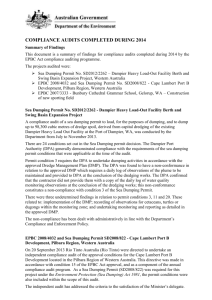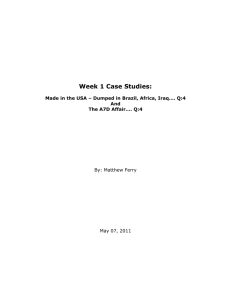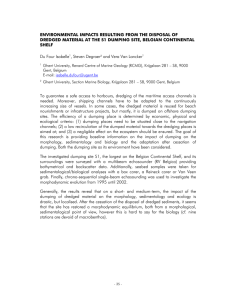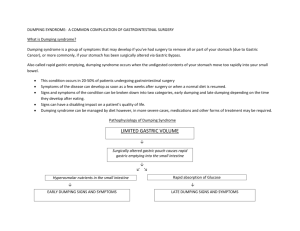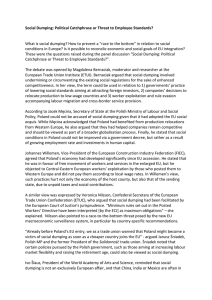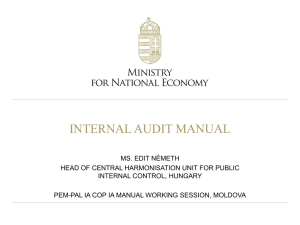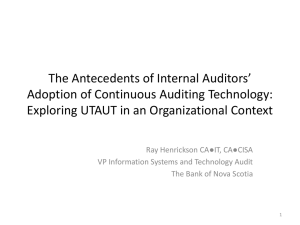Compliance monitoring and auditing
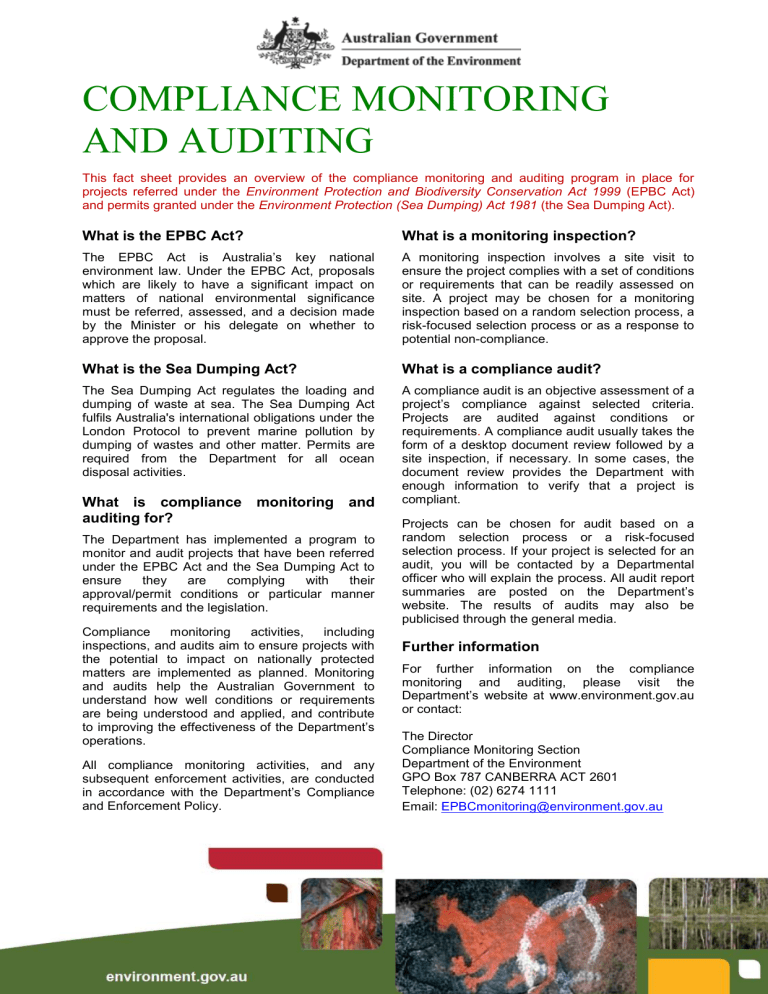
COMPLIANCE MONITORING
AND AUDITING
This fact sheet provides an overview of the compliance monitoring and auditing program in place for projects referred under the Environment Protection and Biodiversity Conservation Act 1999 (EPBC Act) and permits granted under the Environment Protection (Sea Dumping) Act 1981 (the Sea Dumping Act).
What is the EPBC Act? What is a monitoring inspection?
The EPBC Act is Australia’s key national environment law. Under the EPBC Act, proposals which are likely to have a significant impact on matters of national environmental significance must be referred, assessed, and a decision made by the Minister or his delegate on whether to approve the proposal.
What is the Sea Dumping Act?
A monitoring inspection involves a site visit to ensure the project complies with a set of conditions or requirements that can be readily assessed on site. A project may be chosen for a monitoring inspection based on a random selection process, a risk-focused selection process or as a response to potential non-compliance.
What is a compliance audit?
The Sea Dumping Act regulates the loading and dumping of waste at sea. The Sea Dumping Act fulfils Australia's international obligations under the
London Protocol to prevent marine pollution by dumping of wastes and other matter. Permits are required from the Department for all ocean disposal activities.
What is compliance monitoring and auditing for?
The Department has implemented a program to monitor and audit projects that have been referred under the EPBC Act and the Sea Dumping Act to ensure they are complying with their approval/permit conditions or particular manner requirements and the legislation.
Compliance monitoring activities, including inspections, and audits aim to ensure projects with the potential to impact on nationally protected matters are implemented as planned. Monitoring and audits help the Australian Government to understand how well conditions or requirements are being understood and applied, and contribute to improving the effectiveness of the Department’s operations.
All compliance monitoring activities, and any subsequent enforcement activities, are conducted in accordance with th e Department’s Compliance and Enforcement Policy.
A compliance audit is an objective assessment of a project ’s compliance against selected criteria.
Projects are audited against conditions or requirements . A compliance audit usually takes the form of a desktop document review followed by a site inspection, if necessary. In some cases, the document review provides the Department with enough information to verify that a project is compliant.
Projects can be chosen for audit based on a random selection process or a risk-focused selection process. If your project is selected for an audit, you will be contacted by a Departmental officer who will explain the process. All audit report summaries are posted on the Department’s website. The results of audits may also be publicised through the general media.
Further information
For further information on the compliance monitoring and auditing, please visit the
Department’s website at www.environment.gov.au or contact:
The Director
Compliance Monitoring Section
Department of the Environment
GPO Box 787 CANBERRA ACT 2601
Telephone: (02) 6274 1111
Email: EPBCmonitoring@environment.gov.au

